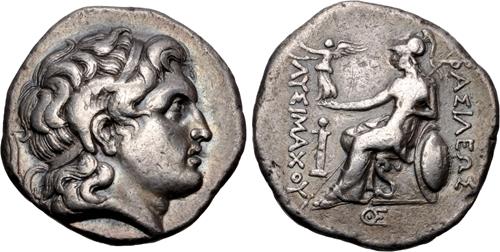According to Suda and Harpocration the first settlers were Greeks from the Alopeconnesus and later more settlers came from Mytilene and Kyme. The older names of the place were Poltyobria and Apsinthus according to Strabo and Stephanus respectively.
Homer mentions that Peirous, who led Troy's Thracian allies, came from Ainos and according to Virgil Aenus was founded by Aeneas after the destruction of Troy.
As a subject ally of Athens, Ainos provided peltasts at the Battle of Sphacteria in 425 BC and sent forces to the Sicilian Expedition in 415. During the Hellenistic period Ainos changed hands multiple times. The city passed to Lysimachos after the death of Alexander the Great, and was subsequently taken by the Seleucid Empire after his defeat and death at the Battle of Corupedium in 281 BC. It then became a possession of the Ptolemaic Kingdom, when it was captured as a result of the Third Syrian War around 246 BC. It was subsequently captured by Philip V of Macedon in 200 BC, and later by Antiochus the Great, who lost it to the Romans in 185 BC. The Romans declared Aenus a free city and it still was so in the time of Pliny the Elder.
Under Justinian I (r. 527–565), the city wall was heightened and the previously unprotected shore fortified. In 1189, the town was plundered by soldiers of the Third Crusade under Duke Frederick of Swabia, with the inhabitants fleeing by ship. In June 1265 Emperor Michael VIII Palaiologos granted the Venetians the right to settle and trade in the city. With the gradual Ottoman conquest of Thrace in the 1360s and 1370s, the city became a haven for the Greek population. Ottoman Sultan Mehmed II attacked the city from land and sea and forced its surrender in January 1456. In 1463 Ainos was given by Mehmed II to the deposed Despot of the Morea, Demetrios Palaiologos, as an appanage (along with parts of Thasos and Samothrace). He remained in possession of the town until 1467, when he fell into disgrace.
Modern location: Enez, Turkey

Reverse: Athena Nikephoros seated left, left arm resting on shield, spear in background; herm to inner left, ΘE monogram in exergue
Die Orientation: 2 H
Weight: 16.79 g
While previous scholars viewed Skostokos as a dynast who took control of parts of Thrace following Lysimachos’ death, Fischer-Bossert’s die study demonstrates that Skostokos was most likely a local dynast of the environs around Ainos, who ruled under Lysimachos, and was permitted to strike Lysimachi beginning late in the king’s reign. Current scholarship suggests he ruled from circa 285/4-273/2 BC (see, e.g., E. Paunov, “Introduction to the Numismatics of Thrace” in J. Valeva, et al., A Companion to Ancient Thrace, p. 280, fig. 18.4). Skostokos apparently continued to strike Lysimachi in the chaotic period following the latter’s death, before Seleukid authority could be established in Thrace. Notes: Iridescent tone. VF. Very rare.
